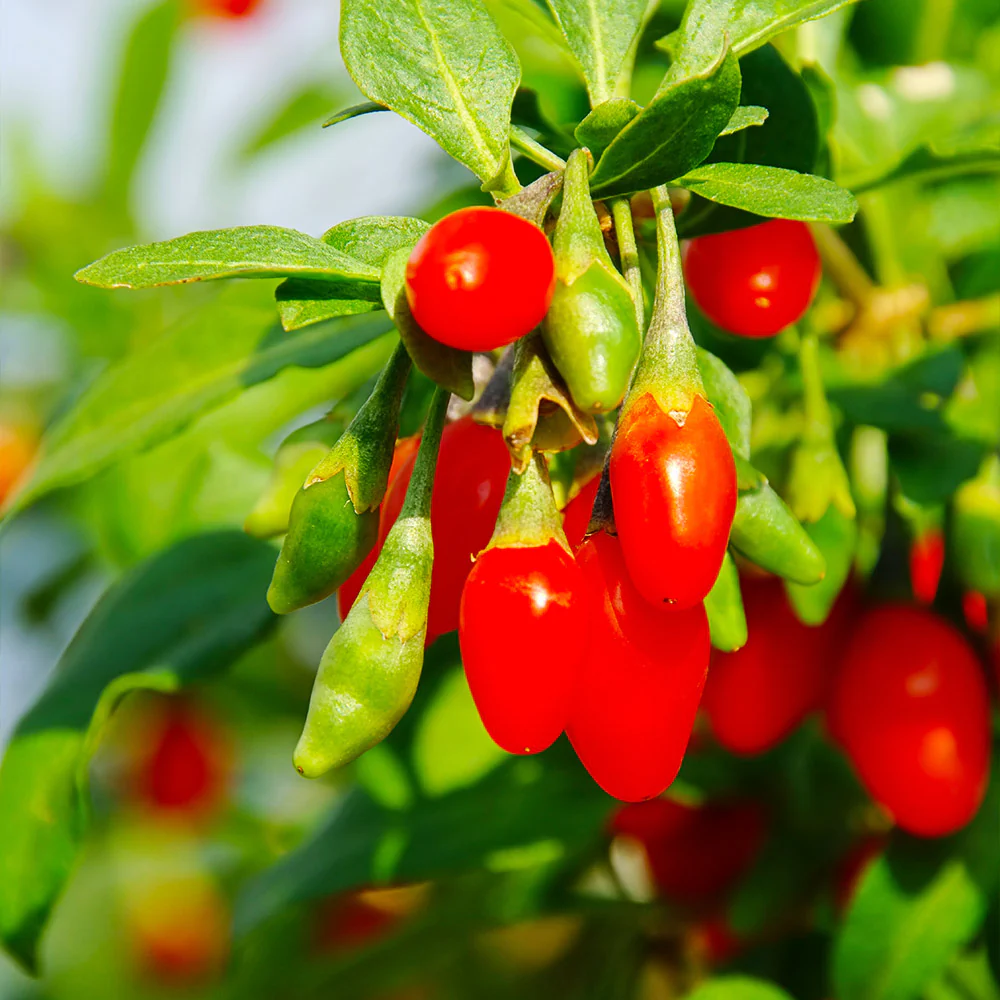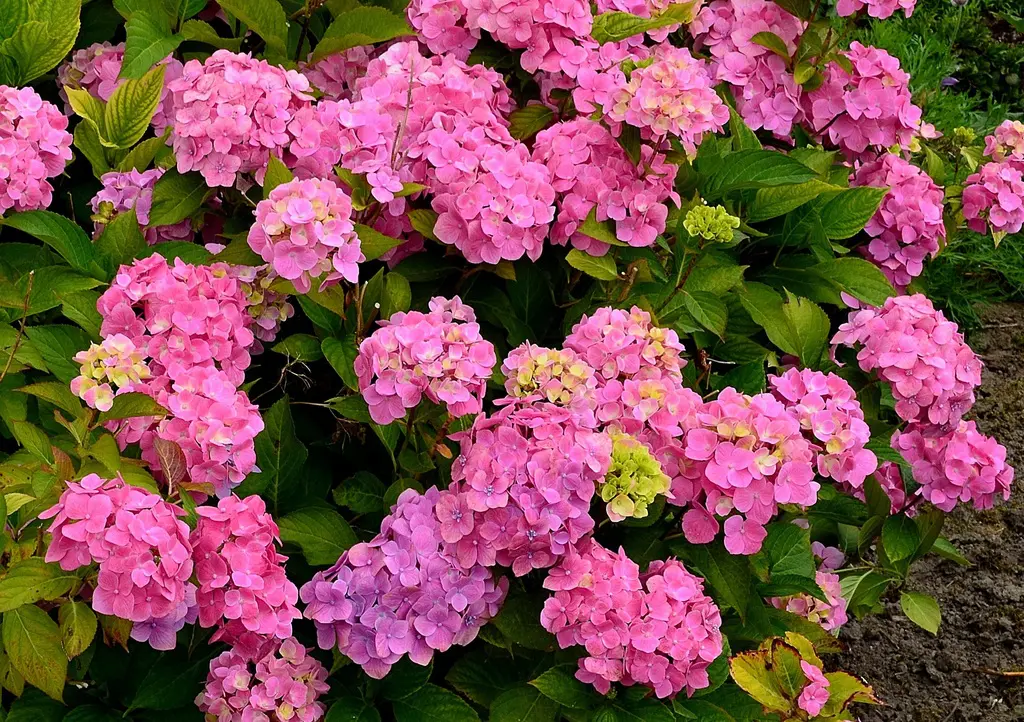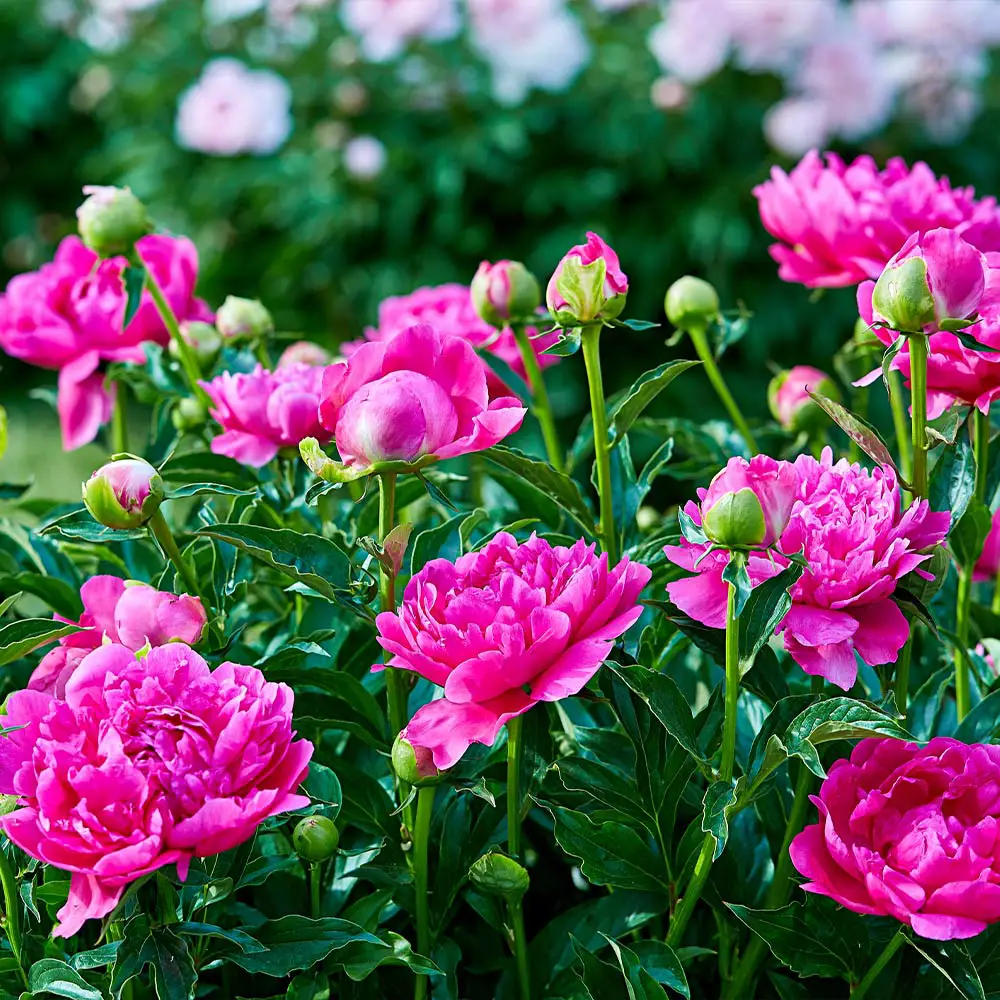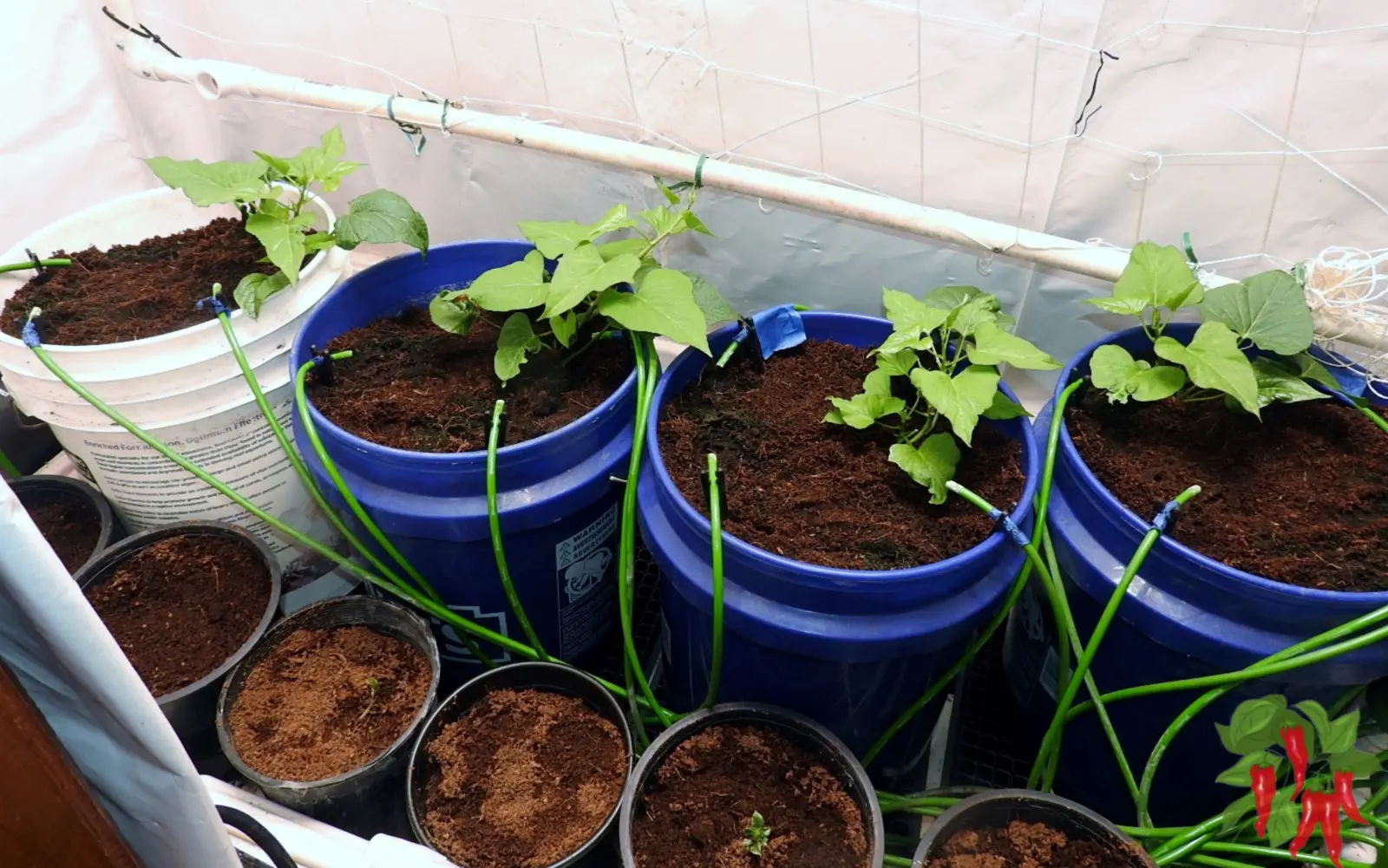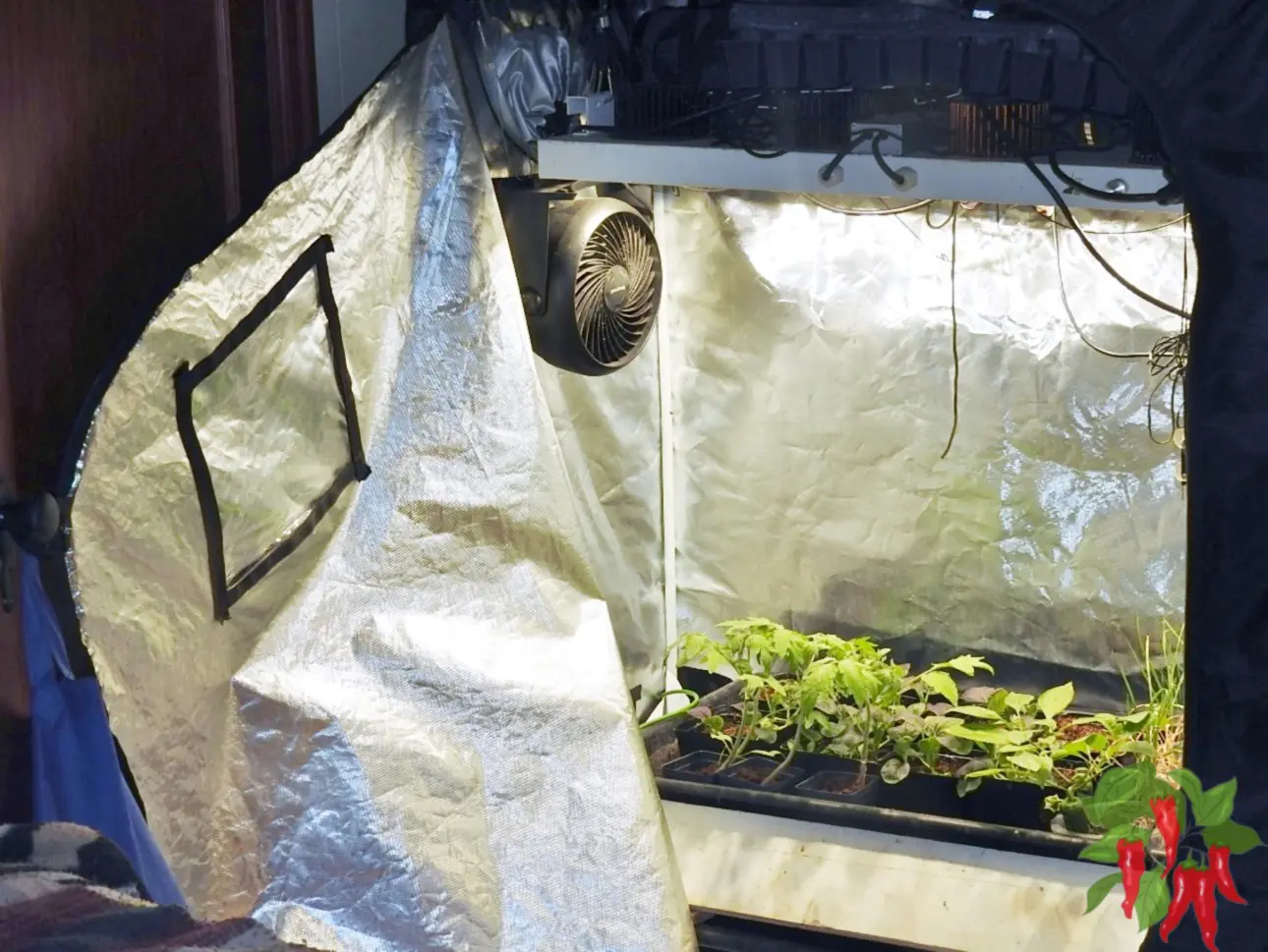This post contains affiliate links. If you buy something from one of our links we may earn a commission. Thanks

Discover the joy of growing Salvia in pots! This guide offers easy steps, from choosing the right Salvia to care tips, ensuring vibrant blooms in your garden.
To grow Salvia in pots, select a container with drainage holes and fill it with well-draining potting soil. Plant Salvia seeds or transplants, placing the pot in a location that receives full sun to partial shade. Water moderately, allowing the soil to dry slightly between waterings. Regularly deadhead spent blooms to encourage more flowering.
Imagine stepping into your garden or balcony, greeted by the vibrant colors of Salvia swaying gently in the breeze.
Growing Salvia in pots is not just a gardening task, it’s a delightful journey that transforms your space into a blooming paradise.
Whether you’re a seasoned gardener or a beginner, this guide will walk you through the joyous process, ensuring your pots are brimming with these beautiful, fragrant flowers.
Let’s embark on this colorful adventure together!
Introduction: Growing Salvia in Pots
Welcome to the world of Salvia, a vibrant realm filled with color and fragrance!
In this guide, we’re diving into the art of growing Salvia in pots, a rewarding endeavor that brings a burst of life to any space.
We’ll explore everything from selecting the perfect Salvia variety for your pot to the ins and outs of planting and care. We’ll also tackle common problems, and propagation techniques, and even delve into some frequently asked questions. By the end of this journey, you’ll be well-equipped to cultivate your own thriving pot of Salvia.
So, let’s get started and let the beauty of Salvia brighten our day!
Brief Overview of Salvia: The Colorful Charmers
Salvia, also known as sage or Salvia officinalis, is a vibrant part of the mint family from South America.
The terms sage and Salvia are often used in different contexts, with sage commonly linked to culinary or medicinal applications, and Salvia typically referring to the decorative flowering types.
However, they are essentially the same plant. Despite the different associations, both terms refer to the same genus of plants.
They are renowned for their tall, brightly colored spikes of tubular-shaped flowers and aromatic leaves.
With over 900 species, Salvia offers a delightful variety of colors, including red, purple, white, pink, and even blue.
Their velvety leaves and fragrant flowers are a magnet for pollinators like bees, butterflies, and hummingbirds, adding a dynamic element to your garden.
Salvia and Containers: A Perfect Match
Yes, Salvia does exceptionally well in containers! Their adaptable nature and compact growth habit make them ideal for pot cultivation.
Whether you’re working with a small balcony space or a sprawling garden, Salvia in pots can add a pop of color and charm.
They’re also great for those who want to experiment with their garden layout as they can be easily moved around.
The Benefits of Growing Salvia in Pots: More Than Just Aesthetics
Growing Salvia in pots isn’t just about the visual appeal; it’s a gardening choice packed with benefits.
For starters, pots provide excellent drainage, a key requirement for healthy Salvia plants.
They also allow you to control the soil quality better, ensuring your Salvia gets the perfect growing conditions.
Plus, growing Salvia in pots makes it easier to protect them from harsh weather conditions.
And let’s not forget the joy of having the flexibility to rearrange your garden layout whenever you fancy!
Best Salvia for pots
Ready to add some Salvia to your garden, but not sure which ones to choose?
Don’t worry, we’ve got you covered! In this section, we’ll delve into the world of Salvia and explore some of the best varieties that thrive in pots.
From their stunning colors to their unique characteristics, we’ll help you find the perfect Salvia that not only suits your garden but also brings you joy every time you see it.
So, let’s dive in and discover the wonderful diversity of Salvia that can make your pots come alive!
Choosing the Right Salvia for Your Pot: The Perfect Fit
Choosing the right Salvia for your potted plant is like finding the perfect pair of shoes, it needs to fit well and look great!
The size of your pot, the climate you live in, and the amount of sunlight your garden receives are all factors that will influence your choice.
Some Salvia is compact and perfect for small pots, while others need more room to spread their roots.
Different Types of Salvia: A World of Variety
The world of Salvia is incredibly diverse, with over 900 species to choose from.
Some popular Salvia varieties include the Salvia splendens, known for its vibrant red flowers, and the Salvia nemorosa, loved for its beautiful purple blooms.
There are also even varieties of blue Salvia. Salvia microphylla ‘Hot Lips’, is a unique variety that flaunts red and white flowers.
Each type has its own charm and characteristics, offering a myriad of options for your garden.
Factors to Consider When Choosing Salvia for Pot Growing: Making the Right Choice
When choosing Salvia for pot growing, there are several factors to consider.
The size of the pot, the Salvia’s growth habit, and the plant’s care requirements are all important.
You’ll also want to think about the aesthetic you’re aiming for. Do you want a pot bursting with vibrant reds?
Or perhaps a calming display of cool blues? Your personal preference plays a big role in this decision.
Perennial Salvia: Year-Round Beauty
Perennial Salvia is a fantastic choice for pots and is often referred to as shrubby Salvia.
These plants come back year after year, providing a constant source of beauty in your garden.
They’re also generally hardier and more drought-tolerant than their annual counterparts.
Some herbaceous perennial Salvia to consider for your pots includes the Salvia nemorosa and the Salvia microphylla ‘Hot Lips’.
How Tall Do Salvia Grow: Sky’s the Limit
The height of Salvia can vary greatly depending on the species. Some Salvia, like the Salvia microphylla, can grow up to 3 feet tall, while others, like the Salvia nemorosa, typically reach about 2 feet in height.
When choosing a Salvia for your pot, consider the plant’s mature height to ensure it won’t outgrow its home.
Remember, a happy Salvia is one that has plenty of room to grow!
Getting Started with Growing Salvia in Pots
Are you excited to start your journey with growing Salvia in pots? Great!
In this section, we’ll guide you through the initial steps, ensuring you have a smooth start.
From gathering the necessary materials to understanding the conditions Salvia love, we’ll cover it all.
We’ll also share some tips on planting Salvia in pots and how to care for them.
So, let’s roll up our sleeves and get started on this exciting gardening adventure!
Necessary Materials and Conditions: The Essentials
To start growing Salvia in pots, you’ll need a few essential materials.
These include a suitable pot with good drainage, a high-quality potting mix (we’ll talk more about this in a bit), and of course, your chosen Salvia plants or seeds.
As for conditions, Salvia loves a sunny spot with well-drained soil. They’re drought-tolerant plants, so they prefer not to have ‘wet feet’.
Steps to Start Growing Salvia in Pots: The Beginning of a Journey
Starting your journey with Salvia is quite straightforward. First, you’ll need to fill your pot with the potting mix, leaving some space at the top.
Make a planting hole slightly larger than your plant. Then, plant your Salvia in the pot, making sure the top of the root ball is level with the soil surface.
Finally, give your newly planted Salvia a good watering.
Growing Salvia from Seed: A Rewarding Challenge
Growing Salvia from seed can be a rewarding experience, but it does require a bit more patience.
Start by sowing your Salvia seeds in a seed tray filled with a seed-starting mix.
Keep the tray in a warm, bright spot, and make sure the soil stays moist but not soggy.
Once the seedlings are big enough to handle, you can transplant them into pots.
I like to sow seeds in a moist paper towel which I place inside a small plastic container with a lid.
I put it in a warm place that’s about 75 degrees and germination is usually fairly quick this way.
Planting Salvia in Pots: The Main Event
When it comes to planting Salvia in pots, the process is quite simple.
Make a hole in your potting mix that’s big enough for the root ball of your Salvia.
Place the plant in the hole, making sure it’s at the same depth it was in its nursery pot.
Then, fill in the hole with more potting mix and water well.
Potting Mix – Coco Coir and Perlite: The Perfect Blend
A good potting mix is crucial for growing healthy Salvia.
A mix of coco coir and perlite is a great choice as it provides excellent drainage while still retaining enough moisture for the plants.
Coco coir is a sustainable, peat-free medium that holds water well, and perlite improves aeration and drainage.
Salvia Pot Size: Room to Grow
Choosing the right pot size for your Salvia is crucial for its growth and health.
The pot should be large enough to accommodate the plant’s mature size and allow for 2 to 3 years of growth before needing to shift up to a larger size container.
This might mean your planting pot would be 6-10 inches or more in width than the root ball of your plant.
Remember, Salvia doesn’t like to be cramped! Providing them with ample space to grow will result in healthier, more vibrant plants.
Detailed Steps on How to Plant Salvia in Pots: A Step-by-Step Guide
• Choose a pot with good drainage that’s big enough for your Salvia.
• Fill the pot with a mix of coco coir and perlite, leaving some space at the top.
• Make a hole in the potting mix that’s big enough for your Salvia’s root ball.
• Place your Salvia in the hole, making sure the top of the root ball is level with the soil surface.
• Fill in the hole with more potting mix.
• Water your newly planted Salvia well.
Tips for Successful Planting: Secrets to Success
For successful planting, remember to water your Salvia well after planting, but then it’s a good idea to allow the soil to dry out between waterings.
Too much water can cause root rot. Salvia prefers a sunny spot, so try to place your pot where it will get plenty of light.
And finally, don’t forget to feed your Salvia with a balanced fertilizer in the spring to promote healthy growth and plenty of blooms.
How to care for Salvia in pots
Once you’ve got your Salvia happily settled in their pots, the next step is to ensure they receive the care they need to thrive.
Caring for Salvia in pots involves a balance of the right amount of water, light, and nutrients, along with regular maintenance to keep them looking their best.
In this section, we’ll guide you through the essentials of Salvia care, from watering and fertilizing to understanding their light and temperature needs.
So, let’s roll up our sleeves and dive into the rewarding world of tending to our potted Salvia!
Watering Salvia: Quenching Their Thirst
When it comes to watering Salvia in pots, less is often more. These plants are drought-tolerant and prefer their soil to dry out a bit between waterings.
A good rule of thumb is to water when the top inch of soil feels dry to the touch.
Be careful not to overwater, as this can lead to root rot. When you do water, do so thoroughly, ensuring the water reaches the deeper roots. Drain any excess water from the saucer.
Fertilizing Salvia: Feeding Your Plants
Salvia aren’t heavy feeders, but they do appreciate a bit of extra nutrition during the growing season.
A balanced, slow-release fertilizer applied in the spring can provide the nutrients your Salvia needs to produce their vibrant blooms.
Be careful not to over-fertilize, though, as too much fertilizer can lead to lush foliage at the expense of flowers.
Salvia Light Requirements: Basking in the Sun
Most Salvia love the sun and need at least six hours of direct sunlight each day to thrive.
However, in hotter climates, they can benefit from some afternoon shade to protect them from intense heat.
If you’re growing your Salvia indoors, place them near a south-facing window for maximum light exposure.
Salvia Temperature Tolerance: Weathering the Seasons
Salvia is quite hardy and can tolerate a range of temperatures.
However, they do best in moderate to warm conditions. During the summer, they can handle temperatures well into the 80s and 90s (Fahrenheit), while in the winter, they can survive in temperatures down to the 20s, depending on the specific variety.
Salvia Winter Care: Preparing for the Cold
Winter care for Salvia in pots depends on the hardiness of the specific variety and your local climate.
For hardy varieties in mild climates, they can often stay outdoors with some added protection like mulch.
For less hardy varieties or in colder climates, you might need to move the pots indoors or into a greenhouse during the winter months.
Remember to reduce watering in winter, as Salvia needs less moisture during this dormant period.
Pruning and maintenance tips
Seasonal Care for Salvia: Adapting to the Rhythm of the Seasons
Just like us, Salvia go through different phases throughout the year, and their care needs to adapt to these changes.
In the late spring, it’s all about growth. This is the time to feed your Salvia with a balanced fertilizer to give them a boost for the growing season. It’s also a good time to do any necessary repotting.
Early summer is when Salvia truly shine, with their vibrant blooms taking center stage.
During this time, it’s important to keep an eye on watering, especially if the weather is particularly hot and dry.
You might want to provide some partial shade in the late afternoon.
However, remember that Salvia is drought-tolerant, so it’s better to underwater than overwater.
As late autumn rolls around, growth starts to slow down. This is a good time to do a thorough check of your plants for any signs of disease or pests.
If your Salvia is perennial, they’ll start preparing for winter dormancy.
Winter care will depend on your climate and the type of Salvia you’re growing.
Some Salvia may need to be brought indoors or protected with mulch if your winters are harsh.
Others may simply need a bit of pruning to remove any dead or damaged growth.
By tuning into the rhythm of the seasons, you can provide your Salvia with the care they need to thrive all year round.
Salvia Hardiness Zone: Knowing Your Climate
Understanding your Salvia’s hardiness zone is crucial for its successful growth.
The hardiness zone refers to the plant’s ability to withstand the minimum temperatures of the region where it’s grown.
Salvia is generally hardy in USDA zones 5 to 10, but this can vary depending on the specific variety.
Knowing your local hardiness zone will help you choose the right Salvia for your climate and provide it with the best care throughout the year.
What is the winter low temperature for Zone 5
The winter low temperature for USDA Hardiness Zone 5 is typically between -20 to -10 degrees Fahrenheit (-29 to -23 degrees Celsius).
This means that plants classified as hardy in Zone 5 can typically survive winter temperatures down to this range.
However, it’s important to note that other factors such as snow cover, duration of cold, and summer heat can also affect plant survival.
Salvia Winter Care: Preparing for the Cold
As the colder months approach, it’s important to prepare your Salvia for winter, especially if you live in a region with harsh winters.
If your Salvia is in pots, consider moving them indoors or to a sheltered location to protect them from freezing temperatures.
For perennial Salvia that is hardy in your zone, they may die back to the ground in winter but will sprout back in spring.
You can help protect the roots by adding a layer of mulch around the base of the plant.
If your Salvia are not hardy in your zone, you might need to treat them as annuals and replace them each year, or overwinter them indoors.
Remember, each variety of Salvia may have different winter care needs, so it’s important to know the specific needs of your plants.
Winter care is all about protection and preparation for the next growing season.
With the right care, your Salvia can weather the winter and come back even stronger in the spring.
Propagating Salvia
Have you ever wished you could have more of your favorite Salvia plants without having to buy new ones?
Well, you’re in luck! In this section, we’ll explore the fascinating process of propagating Salvia.
Propagation allows you to create new plants from the ones you already have, and it’s a rewarding and cost-effective way to expand your collection of Salvia.
We’ll guide you through the different methods of propagation, from stem cuttings to division, so you can enjoy even more of these beautiful plants.
Let’s dive in and multiply the beauty of Salvia in our gardens!
Steps to Propagate Salvia: The Path to New Plants
Propagating Salvia is a rewarding process that can help you expand your collection of these beautiful plants.
The first step is to decide which method of propagation you want to use.
Stem cuttings and division are the most common methods for Salvia.
Once you’ve chosen your method, you’ll need to prepare your materials, such as a sharp knife or pruners, pots, and potting mix.
The next steps will depend on the method you’ve chosen, so let’s delve into those now.
Stem Cuttings: A Piece of the Original
Propagating Salvia from stem cuttings is a popular method. Here’s how to do it:
• Choose a healthy, non-flowering stem from your Salvia plant. The best time to take Salvia cuttings is in the morning when the plant is well-hydrated.
• Using a sharp knife or pruners, cut a 3-4 inch piece from the stem. Make sure the cutting has at least two sets of leaves.
• Remove the leaves from the bottom half of the cutting.
• Dip the cut end of the stem in rooting hormone, if you have it. This step is optional, but it can help promote root growth.
• Plant the cutting in a pot filled with a well-draining potting mix.
• Keep the pot in a warm, bright location, but out of direct sunlight. Make sure the soil stays moist, but not soggy.
In a few weeks, your cutting should develop roots and young plants can be transplanted into a larger pot or the garden.
Division: Doubling Your Pleasure
Division is another method of propagating Salvia, particularly suitable for mature plants that have grown large.
Here’s how to do it:
• Choose a healthy, mature Salvia plant. The best time for division is in the early spring or fall.
• Carefully remove the plant from its pot or the ground.
• Using a sharp knife or spade, divide the plant into two or more sections. Each section should have a good amount of roots and foliage.
• Replant each section in its own pot or a new location in the garden.
Water the newly planted sections well.
With either method, patience is key. It may take a few weeks to see new growth, but the wait will be worth it when you have new Salvia plants to enjoy!
Troubleshooting Common Problems
Problems with Salvia: Common Challenges
Salvia are generally easy to grow and care for, but they can sometimes encounter problems.
These can range from environmental issues like inadequate light or poor drainage to pests and diseases.
Overwatering is a common issue, as Salvia prefer their soil to dry out between waterings.
Nutrient deficiencies can also occur, especially if the potting mix is not well-suited to the plant’s needs.
Identifying and Addressing Common Issues with Growing Salvia in Pots: Becoming a Plant Detective
When growing Salvia in pots, it’s important to keep a close eye on your plants and catch any potential issues early.
Yellowing leaves, for example, could indicate overwatering or a nutrient deficiency.
If your Salvia isn’t flowering as much as expected, it might not be getting enough light.
The key to addressing these issues is to first accurately identify the problem.
Once you’ve done that, you can take the necessary steps to resolve it, whether that’s adjusting your watering schedule, moving your plant to a sunnier spot, or adding plant food to your watering routine.
Insect Pests: Unwanted Visitors
Insect pests can sometimes be a problem for Salvia.
Aphids, for example, are small insects that can be found on the undersides of leaves.
They suck the sap from the plant, which can cause the leaves to become distorted.
If you notice aphids on your Salvia, you can often get rid of them by spraying the plant with water to knock them off, or by using an insecticidal soap or neem oil.
Spider mites are another potential pest. These tiny creatures can cause the leaves to develop a speckled appearance and eventually turn yellow or brown. Increasing humidity around the plant and using a miticide can help control spider mites.
Diseases: Keeping Your Salvia Healthy
While Salvia are generally quite disease-resistant, they can sometimes be affected by fungal diseases, especially if they’re overwatered or if the humidity is very high.
Powdery mildew, for example, is a common fungal disease that causes a white, powdery coating on the leaves.
If you notice signs of disease in your Salvia, it’s important to act quickly.
Remove any affected leaves and avoid watering the foliage of the plant. In the case of a severe infection, you may need to use a fungicide.
Remember, prevention is often the best cure. By providing your Salvia with the right growing conditions and regular care, you can help keep them healthy and free from pests and diseases.
Harvesting Salvia
Growing Salvia in pots is not just about the joy of watching them bloom.
It’s also about the satisfaction of harvesting them, whether you’re gathering flowers for a vase, leaves for a culinary dish, or seeds for next year’s planting.
In this section, we’ll share some tips on how to harvest and use your Salvia.
From the best time to harvest to the proper way to store your bounty, we’ve got you covered. So, let’s get ready to enjoy the fruits or in this case, the flowers, leaves, and seeds of our labor!
Tips for Harvesting and Using Salvia: Reaping the Rewards
Harvesting your Salvia is a rewarding process that allows you to enjoy the fruits of your labor. Here are some tips to help you get the most out of your harvest:
Timing is Everything: The best time to harvest Salvia leaves is in the morning after the dew has dried but before the heat of the day.
This is when the plant’s oils, which give it its flavor and aroma, are at their peak.
Gentle Handling: When harvesting, be gentle to avoid bruising the leaves. Use a sharp pair of scissors or pruners to make clean cuts.
Flower Harvesting: If you’re harvesting Salvia flowers for a vase, cut the stems long and place them in water immediately.
Salvia flowers can last up to a week in a vase if the water is changed regularly.
Seed Collection: If you’re collecting seeds, wait until the flower spikes have dried on the plant.
Then, cut the spike, invert it into a bag, and shake gently to release the seeds.
Storage: Fresh Salvia leaves can be stored in the refrigerator for a short period, but for longer storage, consider drying or freezing them.
To dry Salvia leaves, tie them in small bundles and hang them upside down in a warm, dry location out of direct sunlight.
Culinary Uses: Salvia leaves are a wonderful addition to many dishes. They can be used fresh in salads or as a garnish, or dried and added to soups, stews, or sauces. Some people also enjoy making Salvia tea.
Remember, always wash your Salvia thoroughly before using them, and enjoy the wonderful flavors and aromas they bring to your table!
Growing Salvia in Pots FAQs
Growing Salvia in pots can bring up a lot of questions, especially if you’re new to the process.
In this section, we’ll tackle some of the most frequently asked questions about growing and caring for Salvia in pots.
From watering schedules to lifespan, we’ve got the answers you’re looking for.
So, let’s dive into these FAQs and clear up any uncertainties you might have about your Salvia journey!
Q: What is the best potting mix for Salvia?
A: Salvia prefers a well-draining potting mix to prevent waterlogging and root rot. A mix of equal parts potting soil and coarse sand, or a mix of 25%perlite and 75% coco coir is often ideal. Adding some compost or well-rotted manure can provide additional nutrients.
Q: How often do you water Salvia in pots?
A: Salvia are drought-tolerant plants, so they prefer their soil to dry out a bit between waterings.
A good rule of thumb is to water when the top inch of soil feels dry to the touch. However, the frequency will depend on the size of the pot, the type of potting mix, and the weather conditions.
Q: What is the lifespan of Salvia?
A: The lifespan of Salvia can vary greatly depending on the species and growing conditions. Many perennial Salvia can live for several years if properly cared for, while annual Salvia will complete their life cycle in a single growing season.
Q: Do Salvia prefer sun or shade?
A: Most Salvia prefers full sun, meaning they thrive with at least six hours of direct sunlight each day. However, in hotter climates, they can benefit from some afternoon shade to protect them from intense heat.
Q: How do you care for Salvia in pots?
A: Caring for Salvia in pots involves regular watering (but allowing the soil to dry out between waterings), feeding with a balanced fertilizer in the growing season, providing plenty of sunlight, and pruning as needed to maintain shape and encourage blooming.
Q: How do you overwinter Salvia in pots?
A: Overwintering Salvia in pots depends on the hardiness of the specific variety and your local climate.
For hardy varieties in mild climates, they can often stay outdoors with some added protection like mulch.
For less hardy tender varieties or in colder areas, you might need to move the pots indoors or into a greenhouse during the winter months.
Growing Salvia In Pots Final Thoughts
As we reach the end of our journey through the world of growing Salvia in pots, it’s time to reflect on what we’ve learned.
From choosing the right Salvia and pot, to planting, caring, and troubleshooting, we’ve covered a lot of ground.
But remember, gardening is a lifelong learning process, and there’s always more to discover.
In this concluding section, we’ll recap the key points and leave you with some final thoughts and encouragement for your Salvia growing adventure.
So, let’s wrap things up and get ready to grow some amazing Salvia!
Recap: A Quick Look Back
We’ve journeyed through the world of growing Salvia in pots, starting with an introduction to these beautiful plants and their suitability for container gardening.
We’ve explored the different types of Salvia and how to choose the right one for your pot.
We’ve delved into the process of getting started, from gathering the necessary materials to planting your Salvia in pots.
We’ve also discussed how to care for your Salvia, including watering, fertilizing, and providing the right light and temperature conditions.
We’ve shared tips on pruning and maintenance, and how to propagate your Salvia to create new plants.
We’ve addressed common problems and how to troubleshoot them, and we’ve talked about harvesting and using your Salvia.
Finally, we’ve answered some frequently asked questions about growing Salvia in pots.
Encouragement: Keep Growing!
As we conclude, remember that gardening is a journey, not a destination.
It’s about learning, experimenting, and growing—both as a gardener and in the plants you care for.
Growing Salvia in pots can be a rewarding experience, filled with beautiful blooms and the satisfaction of nurturing something from seed or cutting to full-grown plant.
Don’t be discouraged if you encounter challenges along the way. Every gardener, no matter how experienced, faces difficulties from time to time.
The important thing is to keep learning, keep trying, and keep growing.
So, here’s to your journey with growing Salvia in pots. May it be filled with vibrant colors, fragrant blooms, and the joy of gardening. Happy planting!
Read more: Backyard Gardening Ideas











